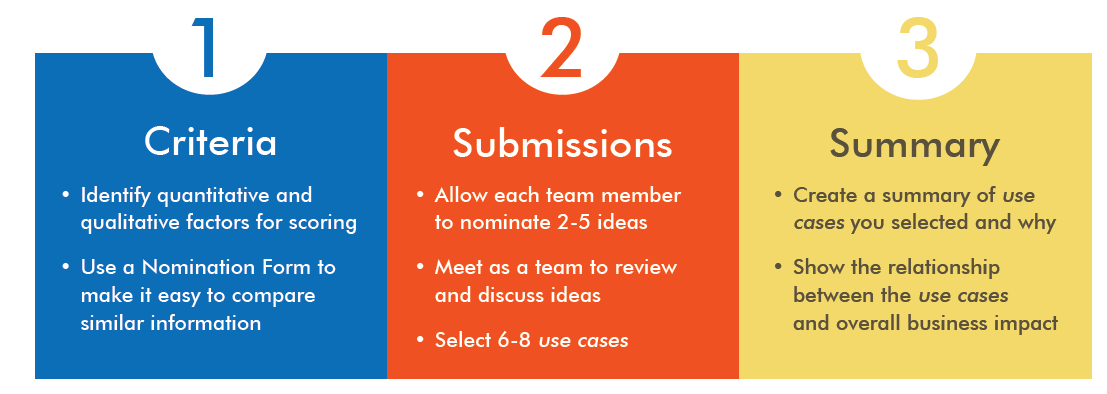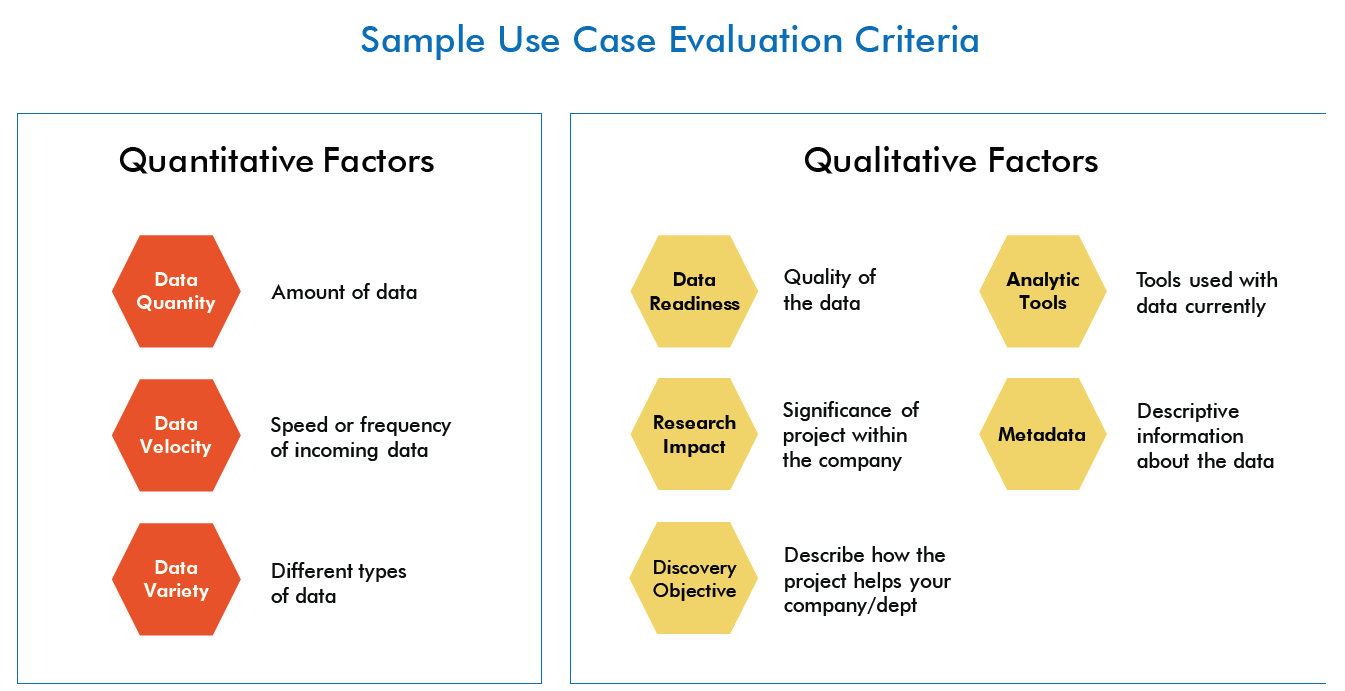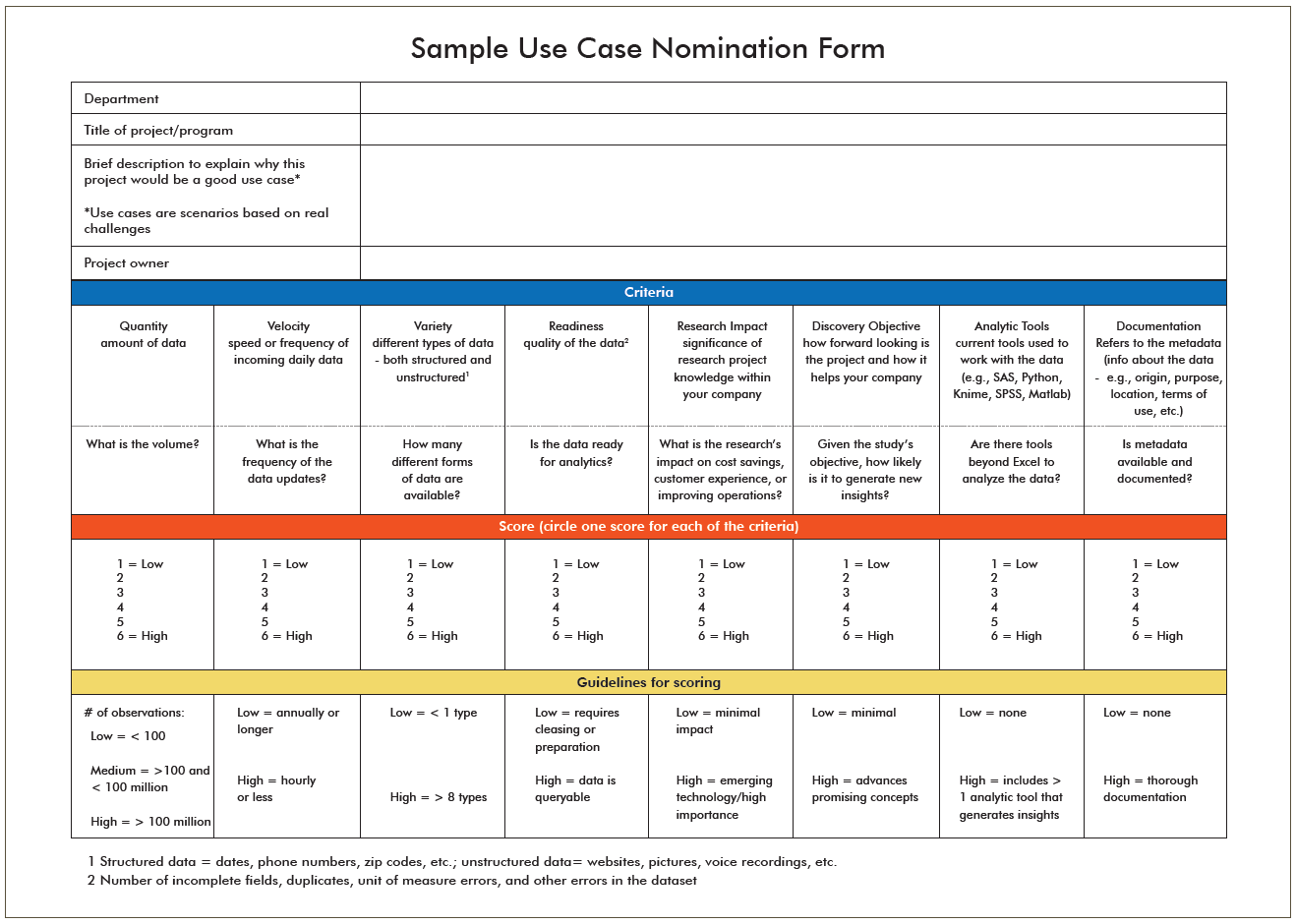Selecting the Right Use Cases
To get the most value from your data science and machine learning efforts and capture more actionable insights, you will need to identify scenarios based on your real business challenges. This approach will help you gain deep insights through analytics and help ensure they have a meaningful impact. We call these scenarios use cases, and they guide your team’s search for analytics solutions. Anchored by this real-world focus, you can uncover and validate business and technical requirements.
Use cases also help your organization understand the value of specific data science processes. As you explore approaches and experiment with tools and techniques, use case owners can play a key role in evaluating the shortlist of possible data science solutions.
Key steps for selecting use cases
It’s important to create a consistent process to find and evaluate use cases, so you target what’s most helpful. A best practice process has three components: identifying scoring criteria, collecting and evaluating submitted ideas, and selecting the final use cases for execution.


- Use the criteria to evaluate the business challenges and measure them along these factors.
- Choose 6-8 scenarios to demonstrate practical solutions for a variety of issues affecting several different stakeholders.
Key Insights
- Cast a wide net to collect and consider a diverse set of use cases that represent key stakeholders throughout the company.
- Establish selection criteria that are both quantitative; agree on and communicate the criteria before ideas are submitted.
- Select actionable use cases that can help you demonstrate new ways of thinking about business problems and unlock answers by applying data science and analytics.
- Narrow and focus each scenario so that it addresses a specific business question, and can be tackled in a limited timeframe.

Quick Tips
- Choose 6-8 use cases to demonstrate practical analytics solutions for a variety of issues affecting different stakeholders across your organization.
- Select scenarios with a limited scope that can be completed within 2-3 months.
- Ensure selected use cases showcase showcase the big picture of how to use data smartly.
Conclusion
Use cases are an important part of a data science implementation because they help your organization understand the value of specific technical solutions and data science processes. By illustrating an array of real and current challenges, these scenarios help to engage stakeholders throughout the company, and build buy-in to support the overall analytics project and its outcomes.